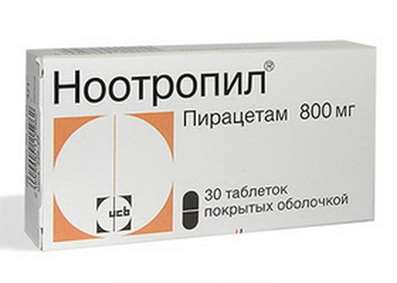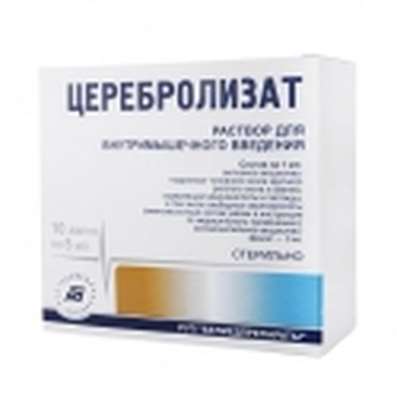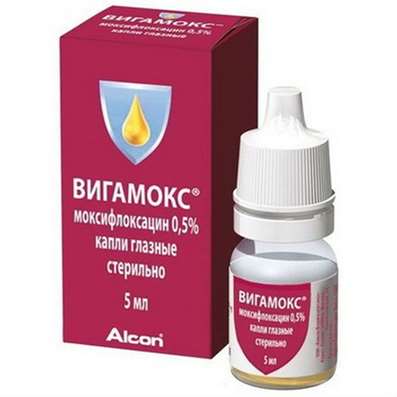Instruction for use: Octreotide (Octreotidum)
I want this, give me price
Chemical name:
Synthetic octapeptide, a somatostatin derivative
Pharmacological group
Hormones of the hypothalamus, pituitary gland, gonadotropins and their antagonists
Antineoplastic hormonal agents and hormone antagonists
Nosological classification (ICD-10)
C25 Malignant neoplasm of pancreas
VIPoma, Glucagon, Locally spread pancreatic adenocarcinoma, Inoperable pancreatic cancer, Pancreas cancer, Carcinoid pancreatic tumor, Tumors of the pancreas, Pancreatic endocrine tumors, Pancreatic exocrine tumors
C26 Malignant neoplasm of other and inaccurately indicated digestive organs
Bowel cancer, Gastrointestinal cancer, Carcinoid GI tract, Adenocarcinoma of the intestine, Cancer of other parts of the large intestine, Argentaffinoma, Carcinoid, Enterochromaffinoma, Cancer of the colon, Colon cancer
C75.1 Malignant neoplasm of pituitary gland
Pituitary Tumor, Aumada del Castillo Syndrome, Somatoliberinoma, Pituitary adenoma, Tumors of the pituitary and suprasellar region
D01 Carcinoma in situ of other and unspecified digestive organs
D13.7 Benign neoplasm of islet cells of the pancreas
Insuloma, Nezidioblastosis, Pancreatic tumors island-cell, Ostrovkovletochnye tumors of the pancreas
D44.3 Neoplasm of uncertain or unknown pituitary nature
Macro-prolaktinoma, Microprolactinoma, Prolactinoma, Somatoliberinoma, Prolactinomas
E22.0 Acromegaly and pituitary gigantism
Pituitary gigantism, Acromegaly, Dysfunction of growth hormone secretion
I85.0 Varicose veins of the esophagus with bleeding
Bleeding from the esophagus, Bleeding from esophageal varices
K59.1 Functional diarrhea
Diarrheal syndrome, Diarrhea, Diarrhea with prolonged enteral feeding through the probem, Prolonged diarrheam Nonspecific diarrhea, Acute diarrhea, Diarrhea, Syndrome of diarrhea, Functional diarrhea, Chronic diarrhea, Diarrhea with an electrolyte balance disorder, Chronic diarrhea, Diarrhea of non-infectious genesis, Diarrhea after a gastroectomy, Diarrhea in children, Persistent diarrhea, Diarrhea (diarrhea), Enterocolitis of non-infectious origin
K86.8.3 * Zollinger-Ellison Syndrome
Adenoma of the pancreas ulzerogennosti, gastrinoma, Zollinger-Ellison Syndrome, gastrinoma
Z100 * CLASS XXII Surgical practice
Abdominal surgery, adenomectomy, Amputation, Coronary angioplasty, Angioplasty of the carotid arteries, Antiseptic skin treatment for wounds, Antiseptic Hand, Appendectomy, atherectomy, Balloon coronary angioplasty, Vaginal hysterectomy, The coronary bypass, Interventions in the vagina and cervix, Interventions on the bladder, Intervention in the mouth, Restoration and reconstructive surgery, Hand hygiene of medical personnel, Gynecologic surgery, Gynecological intervention, Gynecological surgery, Hypovolemic shock during operations, Disinfection of purulent wounds, Disinfection of wounds edges, Diagnostic intervention, Diagnostic procedures, Cervical Diathermocoagulation, Long-surgery, Replacing the fistula catheters, Infection in orthopedic surgery, Artificial heart valve, cystectomy, Short-term outpatient surgery, Short-term operation, Short surgical procedures, Krikotireotomiya, Blood loss during surgery, Bleeding during surgery and in the postoperative period, Kuldotsentez, laser photocoagulation, laser coagulation, retinal laser coagulation, Laparoscopy, Laparoscopy in Gynecology, CSF fistula, Small gynecological operations, Small surgical procedures, Mastectomy and subsequent plastic, mediastinotomy, Microsurgical operations on the ear, Mukogingivalnye operation, suturing, Minor surgery, neurosurgical operation, Immobilization of the eyeball in ophthalmic surgery, testectomy, pancreatectomy, Perikardektomiya, The period of rehabilitation after surgery, The period of, convalescence after surgery, Percutaneous transluminal coronary angioplasty, Pleural thoracentesis, Pneumonia postoperative and posttraumatic, Preparation for surgical procedures, Preparation for surgery, Preparation of the surgeon's hands before surgery, Preparation of the colon for surgical procedures, Postoperative aspiration pneumonia in neurosurgical and thoracic surgery, Postoperative nausea, Postoperative bleeding, postoperative granuloma, postoperative shock, The early postoperative period, myocardial revascularization, Radiectomy, gastric Resection, bowel resection, uterine Resection, liver Resection, enterectomy, Resection of part of the stomach, Reocclusion of the operated vessel, Bonding tissues during surgical procedures, Removal of sutures, Condition after eye surgery, Condition after surgery, Condition after surgery in the nasal cavity, Condition after gastrectomy, Status after resection of the small intestine, Condition after tonsillectomy, Condition after removal of the duodenum, Condition after phlebectomy, Vascular surgery, Splenectomy, Sterilization of surgical instruments, Sterilization of surgical instruments, sternotomy, Dental surgery, Dental intervention in periodontal tissues, strumectomy, Tonsillectomy, Thoracic surgery, total gastrectomy, Transdermal intravascular coronary angioplasty, Transurethral resection, Turbinektomiya, Removal of a tooth, cataract surgery, Removal of cysts, tonsillectomy, Removal of fibroids, Removing the mobile primary teeth, Removing polyps, Removing broken tooth, Removal of the uterus body, Removal of sutures, Urethrotomy, Fistula likvoroprovodyaschih ways, Frontoetmoidogaymorotomiya, Surgical infection, Surgical treatment of chronic limb ulcersm, Surgery, The surgery in the anal area, The surgery on the colon, Surgical practice, The surgical procedure, Surgical interventions, Surgery on the gastrointestinal tract, Surgical procedures on the urinary tract, Surgical procedures on the urinary system, Surgical intervention of the genitourinary system, Surgical procedures on the heart, Surgical manipulation, surgery, Surgery on the veins, Surgical intervention, Vascular surgery, Surgical treatment of thrombosis, cholecystectomy, Partial gastric resection, transabdominal hysterectomy, Percutaneous transluminal coronary angioplasty, Percutaneous transluminal angioplasty, Coronary artery bypass, tooth Extirpation, Extirpation of milk teeth, pulpectomy, pulsative cardiopulmonary bypass, tooth Extraction, teeth Extraction, cataract extraction, Electrocoagulation, endourological intervention, episiotomy, Etmoidotomiya, Complications after tooth extraction
Code CAS83150-76-9
Characteristics of Octreotide
Synthetic analogue of somatostatin.
Pharmacology
The pharmacological action is somatostatin-like.
It inhibits the production of growth hormone, reduces the secretion of glucagon, insulin, serotonin, gastrin, vasoactive intestinal peptide, secretin, motilin and pancreatic polypeptide. Reduces blood flow in the visceral organs. Eliminates symptoms associated with metastases of carcinoid tumors (hot flashes and diarrhea), increased secretion (adenoma) of the vasoactive intestinal peptide (diarrhea), glucagon (diarrhea, weight loss, necrotizing migrating rash), insulin (hypoglycemia). Significantly reduces the concentration of growth hormone and / or somatomedin C in patients with acromegaly, TSH production, stimulated tireoliberinom. Oppresses the contractility of the gallbladder, suppresses the flow of bile into the duodenum.
After n / c injection (obtainable effects are directly proportional to the concentration in plasma and do not differ from those after i / v injection) is rapidly and completely absorbed. Cmax (up to 5.2 mg / ml at a dose of 100 μg) is achieved within 25-30 minutes. The majority (65%) binds in plasma with lipoproteins, to a lesser extent with albumins. T1 / 2 after injection is 100 minutes. The duration of action is variable, on average - about 12 hours, depending on the type of tumor. About 32% of the administered dose is excreted unchanged in the urine. In elderly patients, the clearance of octreotide decreases, and T1 / 2 increases. In severe renal failure requiring hemodialysis, the clearance is reduced by half.
Long acting dosage forms of octreotide are for the / m and provides stable maintenance of therapeutic blood levels of octreotide for 4 weeks.
Indications
Acromegaly (with ineffectiveness of dopamine agonists or impossibility of surgical treatment, radiotherapy), endocrine tumors of the gastroenteropancreatic system (relief of symptoms of carcinoid tumors with signs of carcinoid syndrome, tumors characterized by hyperproduction of vasoactive intestinal peptide), glucagonomas, gastrinomas (Zollinger-Ellison syndrome), insulomas , somatoliberinomy, persistent diarrhea in AIDS patients, pancreas surgery (prevention of complications), blood flow (including relapse prevention) for oesophageal varices in patients with cirrhosis.
Contraindications
Hypersensitivity.
Restrictions for use
Chololithiasis, diabetes, pregnancy, breast-feeding.
pregnancy and lactation
The action category for fetus by FDA is B.
Side effects
On the part of the intestine: nausea, vomiting, anorexia, abdominal cramps, flatulence, diarrhea, steatorrhea (without malabsorption phenomena), symptoms of acute intestinal obstruction, acute hepatitis without cholestasis, hyperbilirubinemia, increased activity of hepatic transaminases, alkaline phosphatase, GGT, acute pancreatitis (In the first hours or days after the administration of the drug).
Other: alopecia, allergic reactions; Locally - pain, sensation of itching or burning, redness, swelling. With long-term use - the formation of gallstones, a decrease in glucose tolerance (due to suppression of secretion of insulin), persistent hyperglycemia, hypoglycemia.
Interaction
Reduces the level of cyclosporine in the serum and slows the absorption from the gastrointestinal tract of cimetidine and nutrients. Require dose adjustment of insulin used at the same time, oral hypoglycemic agents, beta-blockers, diuretics and CCBs. With the simultaneous use of octreotide and bromocriptine, the bioavailability of the latter increases.
Overdose
Symptoms: short-term loss of heart rate, flushes to the face, abdominal pain of a spastic nature, diarrhea, nausea, sensation of emptiness in the stomach.
Treatment: symptomatic.
Routes of administration
P / to, in / in (intravenously), in / m (intramuscularly).
Precautions
Significant fluctuations in the concentration of glucose in the blood can be reduced by the more frequent administration of smaller doses; Should be borne in mind that the treatment of gastroenteropancreatic endocrine tumors does not exclude a sudden relapse of symptoms, and in patients with insulomas - an increase in the severity and duration of hypoglycemia. A systematic control of the glucose concentration is necessary, especially in patients with bleeding from varicose veins of the esophagus with cirrhosis, as. Increases the risk of developing type 1 diabetes mellitus; The need for insulin changes with the already existing diabetes.

 Cart
Cart





